CSotD: VP Debate 2, the Sequel
Skip to comments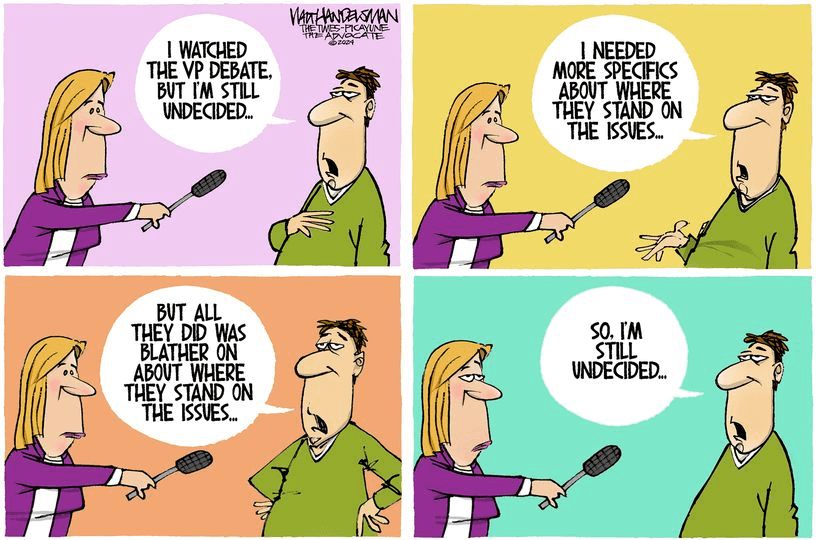
I promised more coverage if there were more cartoons about the VP Debate, so we’ll start with Walt Handelsman’s contribution, because the buried joke here is that the undecideds didn’t likely watch the debate but he’s right that they are likely still peddling the same-old-same-old excuse.
It’s so much better than admitting that you can’t be bothered to sort through the information available, since that questions either your patriotism or your brainpower. And as I’ve said before, it would be nice if these folks would just stay home on November 5, but a lot of them won’t.
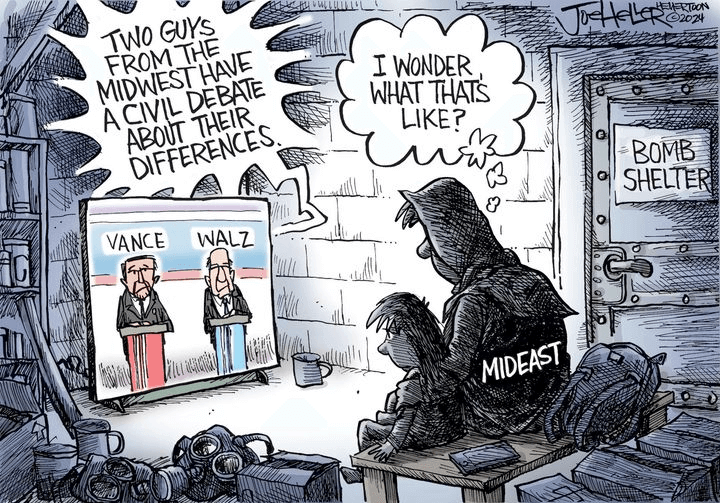
Joe Heller picked up on the overall decency of the encounter, and ties it into the Mideast crisis. I like the overall concept and, as I said yesterday, it did seem like a throwback to the days of civilized debates.
However.
However, I was thinking back to the last time I felt the need to make an actual decision, and I think it was when Jimmy Carter was running against Gerald Ford and we were faced with two decent individuals offering their best visions of the next four years.
I chose Ford because of his experience and because I felt he could use a full term to finish mopping up from the Nixon debacle, but I wasn’t upset when Carter won, though nobody seemed to want to cooperate with him over the next four years.
Yeah, we all love him today, but where were we when he needed us? Different topic, different rant.
Point now is that, while Heller is right to wish we could discuss things decently, it’s not as if anyone came to the debate prepared to change their positions and it’s not like anyone would walk into a Mideast truce discussion prepared to compromise.
The best that can be said is that it’s better to talk than to shoot at each other.
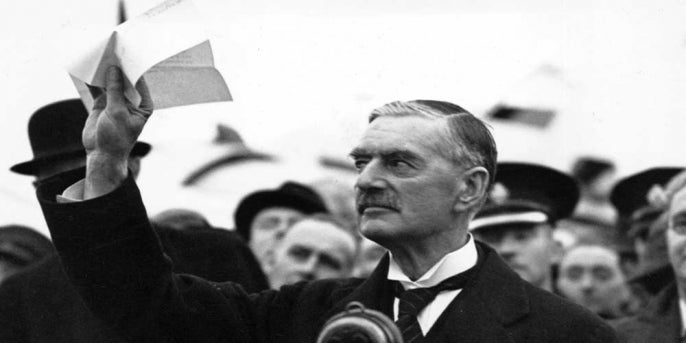
But even that concept has its limitations.
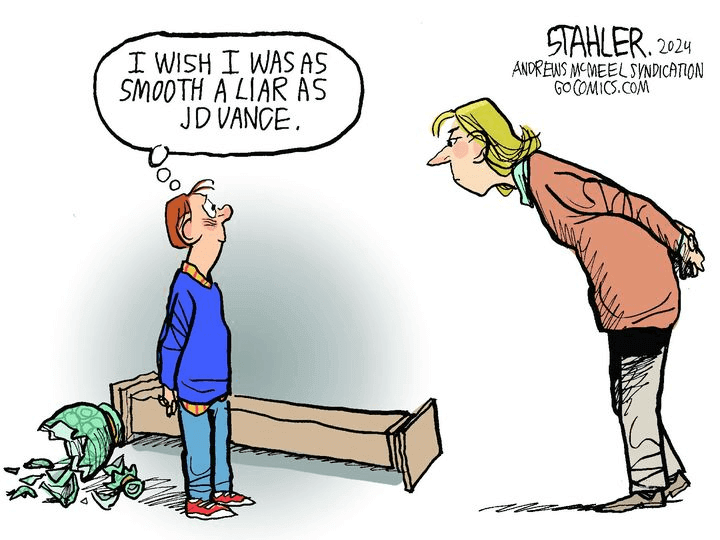
Jeff Stahler (AMS) offers a gentle means of expressing the overall observation that JD Vance stood there politely and decently offering a cascade of lies, and that’s not a partisan conclusion: He claimed that migrants were causing the housing shortage. He lied about crime statistics and about the amount of fentanyl coming into the country, falsely suggesting it was being imported by illegal aliens. He lied about whether Donald Trump had attempted to overturn the Affordable Care Act.
And, most blatantly, he ducked and dodged his opponent’s simple, direct question:
Juxtaposition of the Day
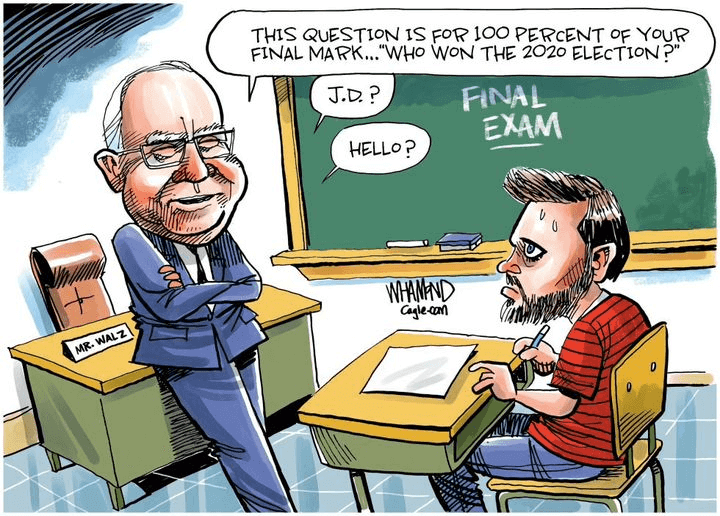
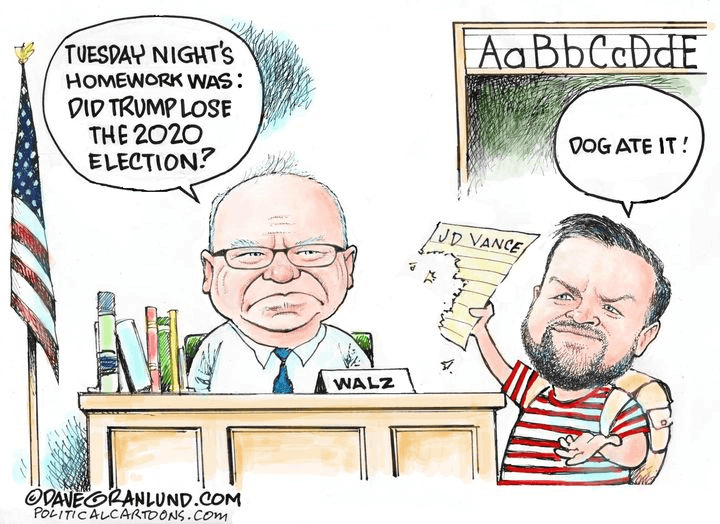
Both cartoonists place Walz in the role of teacher, which he was before entering politics, and Vance as the recalcitrant student. The difference is chiefly in nuance, with Whamond emphasizing his refusal to provide a direct answer and Granlund marking the smokescreen of distractions he threw up instead.
I’ll ding Whamond slightly for saying it was 100% of his final mark, because that is an unwarranted assumption and those who came to the debate favoring him left in the same way, plus a few may have softened their opinion of him because he wasn’t the hateful, blustering bully he’d been on the campaign trail.

But Ann Telnaes was neither bemused nor amused by the contents of that aforementioned smokescreen, which contained blatant and obvious lies, no matter how politely presented.
It was as if that boy in the Stahler cartoon sweetly told his mother that the vase had not been broken, despite the shards scattered in plain view.
Or, as Hamlet put it, “Meet it is I set it down, That one may smile, and smile, and be a villain.”
And it’s better that Telnaes set it down in fury than that she try to make of it a joke, because sometimes you just end up running around in the same circles, even if
It seemed like such a good idea at the time
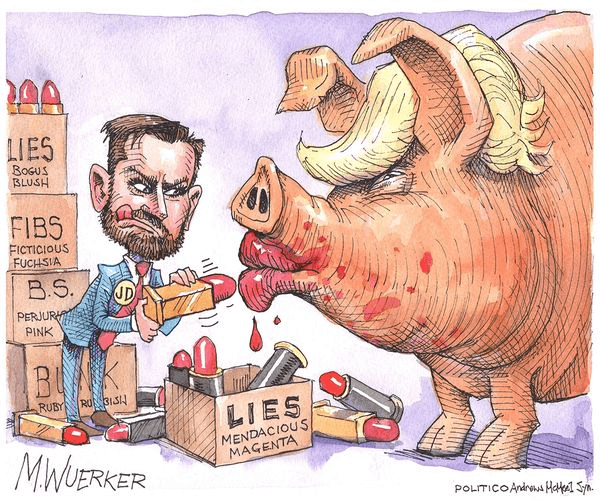
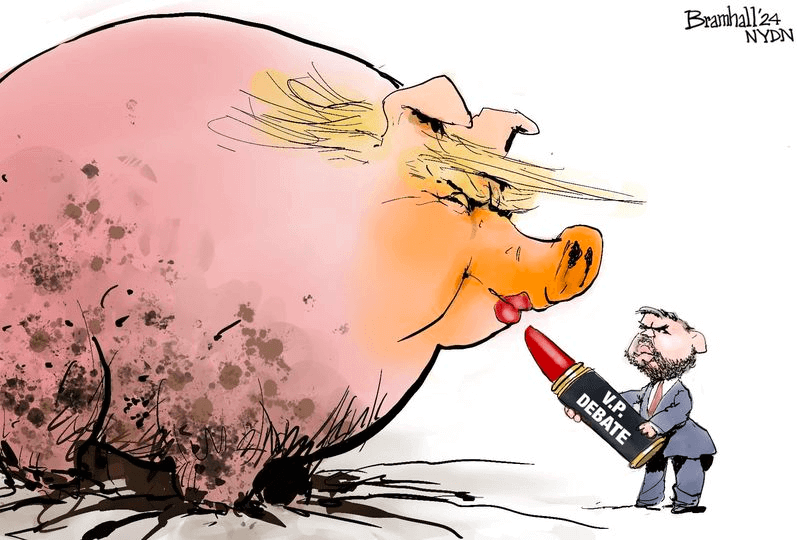
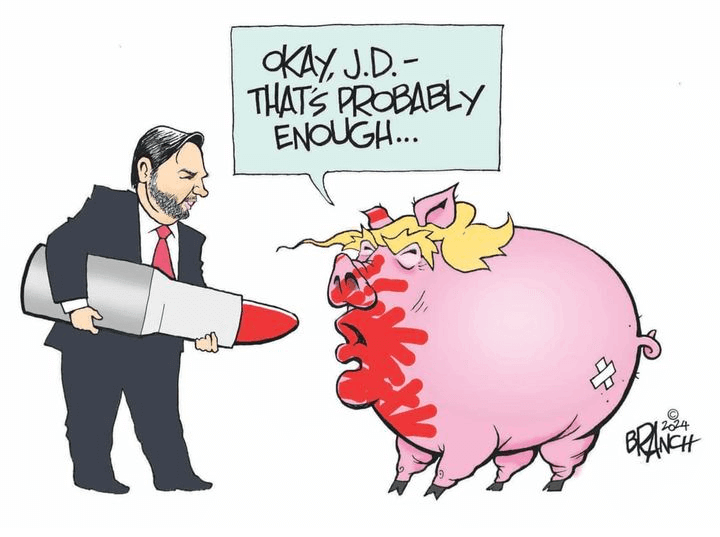
Three good cartoonists; one good idea.
These things happen, but, then again, a good rule of thumb in this business is that if the idea came to you quickly, it likely came to some other people just as fast.
Shrug it off and hope, I suppose, that tomorrow’s idea doesn’t come quite so readily.

And having pointed out that unfortunate coincidence, I’ll face at least one, possibly more, of those cartoonists this afternoon in Montreal as we begin the joint conference of Canadian and American political cartoonists.
Terry Mosher (Aislin) reminds me of the days a generation ago when I lived just over the border and could leave work at five, pick up my boys at the house and still make the first pitch of an Expos game. Those were the days, my friend.
I’ll be reporting on the confab throughout the fin de semaine.
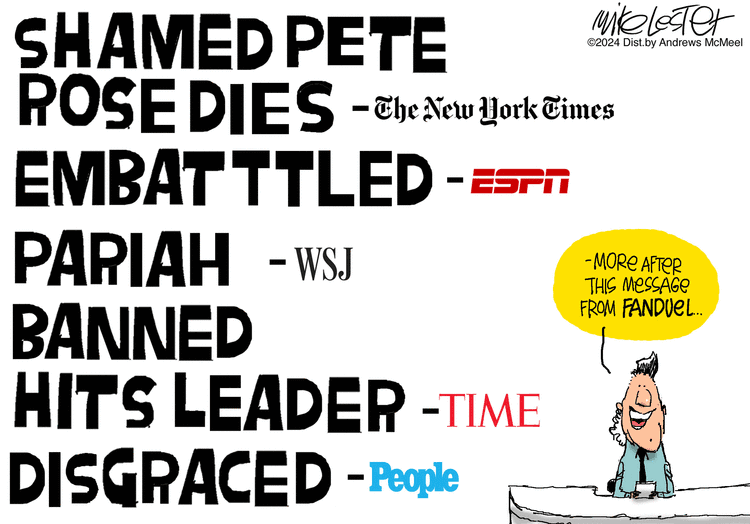
But speaking of baseball, kudos to Mike Lester (AMS) for, first of all, not (also) copying the famous photo of Pete Rose diving for home plate, and, second, not (also) making a joke about betting on his success in getting past St. Peter at the Golden Gates.
The fact that sports betting is legal today doesn’t change either the fact that it was illegal when Pete did it, nor the principle that athletes should not bet on their own sport, regardless of the law.
But Lester taps into the fact that Major League Baseball, as well as other professional sports and the networks that cover them, are profiting from the flood of gambling unleashed by a Supreme Court decision and the greed it turned loose.

Cathy Wilcox is only one of several Australian cartoonists who decried the decision in their country to allow sports gambling to become legal and empty the wallets of people who should have been spending that money to feed and clothe their families.
But don’t imagine it’s only Down Under where legalized sports gambling is taking a toll on those least able to afford to lose money.
When I was in college, athletes were cautioned not to talk about injuries or what they’d done in practice, because in those days, it was the Good Fellas who were listening.
Now it’s everybody, and they aren’t nearly as subtle as the mobsters.
And the mobsters weren’t always that subtle.
So we’re reminding folks not to gamble if it seems like mebbe a problem.

Comments 10
Comments are closed.